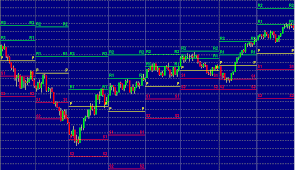Indicator Pivot Points
Original price was: $12.00.$6.00Current price is: $6.00.
A pivot point indicator is a technical analysis tool used to identify potential support and resistance levels in financial markets. It’s calculated using the previous period’s high, low, and close prices and is used to anticipate price movements in the subsequent period. Pivot points are often used by day traders and short-term investors to gauge market sentiment and identify potential trading opportunities.
Description
A pivot point indicator is a technical analysis tool used to identify potential support and resistance levels in financial markets. It’s calculated using the previous period’s high, low, and close prices and is used to anticipate price movements in the subsequent period. Pivot points are often used by day traders and short-term investors to gauge market sentiment and identify potential trading opportunities.
- Pivot Point (PP): Calculated as (High + Low + Close) / 3, where High, Low, and Close refer to the previous period’s values.
- First Support (S1): PP – (High – Low)
- First Resistance (R1): (2 * PP) – Low
- Second Support (S2): PP – (High – Low)
- Second Resistance (R2): PP + (High – Low)
-
Identifying Support and Resistance:Pivot points and the calculated support and resistance levels act as potential price barriers where reversals may occur.
-
Gauging Market Sentiment:Trading above the pivot point suggests bullish sentiment, while trading below indicates bearish sentiment.
-
Potential Trading Signals:Traders may look for price bounces off support levels (buying opportunities) or rejections at resistance levels (selling opportunities).
-
Trend Identification:Pivot points can help identify the overall trend of the market. If the price consistently stays above the pivot point, it suggests an uptrend, and vice versa.
- Incorporate Fibonacci retracement levels for more precise calculations
- Focus on short-term price movements and provide eight support and eight resistance levels.
- : Give more weight to the closing price, making them more dynamic than standard pivot points.
-
Not a Guarantee:Pivot points are just one tool in a trader’s arsenal and should be used in conjunction with other technical indicators and analysis techniques.
-
Market Context:Consider the broader market context and trend when interpreting pivot point signals.
-
Timeframes:Pivot points can be calculated for various timeframes (daily, weekly, monthly) depending on the trader’s strategy.







Reviews
There are no reviews yet.